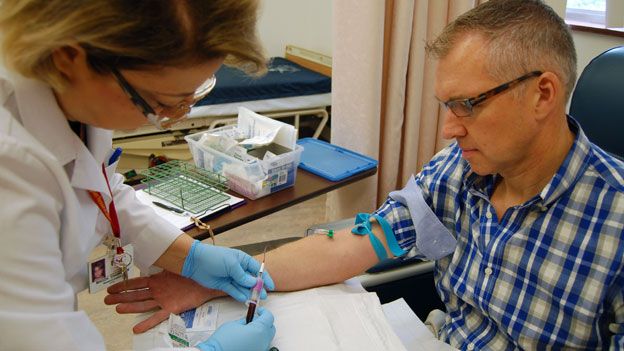“I’m not one of these who has to go to Paris, but it would be fun to finish seeing all the 50 states,” she said. “I’ve visited 30 of them.”
Ms. Moske grew up in a family “where we were always getting utilities shut off,” she said. “We lived in fear that our car would be repossessed, and we frequently ran out of milk. I was raised by two people who were very good at wasting money and very poor at managing it. They were a financial disaster.”
“My father worked very hard his entire life and made a good income, yet he died penniless at age 78,” she said. “I’m frugal to a fault. Therefore my retirement is in pretty good shape.”
Ms. Moske is proof that it is never too early to start working on your retirement plan. Fewer workers today have traditional pensions than in the past, life expectancies are generally longer and, with unknowns like health care costs and inflation in the coming decades, planning is more important than ever.
When Ms. Moske was 26 and working full time to pay her way through college, she signed up for a class on finance and investing. “I didn’t know a stock from a cornstalk, but I realized that I needed to take control,” she said. “My husband and I immediately started living on less than what we needed, saving and investing.”
Money was tight during the dozen years that she stayed home to raise the couple’s two children, now 20 and 22. She also missed out on those years of employer-provided retirement savings.
Then, six years ago, her husband died from injuries sustained in a fall. That caused a seismic shift not only emotionally, but also financially, as she had to live on one income. But she paid off her home, now valued at around $300,000, with a portion of the money she received from her husband’s
life insurance policy.
“I will be fine,” she said. “But I don’t go it alone: I meet with a
financial planner once a year to make sure I am on track, and I check retirement calculators all the time.”
In many ways, she is an anomaly.
‘Work More, Save More or Both’
Unlike Ms. Moske, many Americans are not ready for retirement. “Nearly half of families have no retirement-account savings at all,” says a
report by the Economic Policy Institute, an independent nonprofit think tank that researches the impact of economic trends and policies on working people in the United States. The median retirement savings figure among all working-age families in the United States is just $5,000; the median among families with savings is $60,000.
According to the Fidelity Investments
Retirement Savings Assessment, 55 percent of American households risk not being able to cover essential expenses like housing, health care and food in retirement.
Fred Blanton, a business and marketing consultant in Houston, does not have “a big golden nest egg,” he said. “I’m going to be 65 in a few months, but I need an income. I have enough money if I live another 15 years, but am I going to die at 80?”
Mr. Blanton’s fear of outliving his savings is heartbreakingly real. “We are now living longer and have to recognize that we either have to work more, save more or both,” said Don Blandin, president and chief executive of the nonprofit
Investor Protection Trust, which worked with Detroit Public Television to produce the documentary “
When I’m 65: Rethinking Retirement in America.”
“The 65 retirement age for
Social Security was put in place in 1933 when retirement lasted eight to 10 years,” Mr. Blandin said. “In the old pension system, people didn’t have to make decisions on how much to contribute to a retirement account, which investments to grow their nest egg, how big of a nest egg they would need, what to do with the nest egg when changing jobs and how much to withdraw on an annual basis in retirement.”
A Plan for the Self-Employed
It is essential to get a “snapshot of your financial picture ASAP,” Mr. Blandin said. For example, how much have you already saved for retirement? How much are you saving annually as a percentage of your income? Can you bump it up? How is it invested? Have you used a retirement calculator to run the numbers? Have you worked with a financial planner to help you create a blueprint?
Even people who save conscientiously, he said, are not necessarily paying close attention to the details of the financial products they purchase, investment fees, planning for health care in retirement, inflation and other factors that will affect their future.
Moreover, the 15 million self-employed workers in this country face another set of retirement challenges. For many of them, working longer is their retirement plan, according to a recent
report by the Transamerica Center for Retirement Studies in collaboration with the Aegon Center for Longevity and Retirement. They found that more than half of self-employed workers expected to retire either after age 65 or never.
“Saving and planning for retirement among the self-employed requires a do-it-yourself approach,” said Catherine Collinson, president of the Transamerica Center and executive director of the Aegon Center. “Because they don’t have an employer, they typically lack access to the employer-sponsored retirement benefits that so many workers enjoy.”
“They also often encounter fluctuations in income,” she said, “which makes it that much more challenging to save on a consistent basis.”
About one-third of self-employed workers always make sure they are saving for retirement, according to the report. Less than a quarter say they save for retirement on an occasional basis, or that they have saved for retirement in the past but are not currently doing so.
For many retirees, part-time work is a pillar of their retirement strategy, along with Social Security, retirement savings plans and other savings. “The line between work and retirement has blurred,” said Maddy Dychtwald, an author and a founder of
Age Wave, a think tank and consultancy. “Seven in 10 pre-retirees say they plan to work in retirement, and the fastest-growing segment of the total American work force is those 55-plus.”
Some people have always worked a variety of jobs in retirement, but for a growing number of retirees, it is now a necessity. “With my clients, I’m having retirement discussions about transitioning their lifestyle gradually,” said Lazetta Rainey Braxton, a financial planner and founder of
Financial Fountains in Baltimore. “We talk about ways that their skill set allows them to be a part of the gig economy, and if they need to add any new skills to stay relevant in the work force and how to budget for that cost.”
Even for those who have saved enough to retire comfortably, working for pay in retirement can help provide a safety net and peace of mind. It helps people put off dipping into retirement accounts and may even allow some to continue contributing to their retirement savings.
The pay can also help provide a cushion to allow someone to delay tapping into Social Security until age 70, which increases annual Social Security income by nearly 8 percent compared with retiring at the full retirement age. The income can also help with medical bills not covered by
Medicare.
Making It Work
For Michael L. Stark, 66, chief operating officer at American Financial Network in Calabasas, Calif., the decision to stay on the job is straightforward. He loves what he does and believes that he is still on a learning curve. He has flexibility in his hours and a short commute to work, leaving him time to spend with his three grandchildren and on leisure activities like skiing and hiking.
“I am not wealthy by any means, but my wife and I have done O.K. saving,” he said. “I could have retired a couple of years ago, but I am not mentally or physically ready to retire right now.”
The benefits of working in retirement, of course, go well beyond finances. In fact,
a recent study by Age Wave and Merrill Lynch found that the top three benefits of continuing to work in retirement were mental stimulation, physical activity and social connections.
Retirement is about a lot more than just hitting financial targets. “It’s about taking a more holistic approach to our longer lives,” Ms. Dychtwald said. “Despite the challenges, retirees are generally adaptable. They are willing to make a wide array of course corrections, trade-offs and adjustments — from continuing some form of work, to downsizing or relocating their home, to renting out a spare bedroom or living with a roommate — which offer the chance to create more financial security.”
As for Ms. Moske, when she retires she plans to buy a small condo in Florida where she can go for the winter months. Thinking of her brown-bag habits, she laughed and said, “I’ll name it PB&J.”




